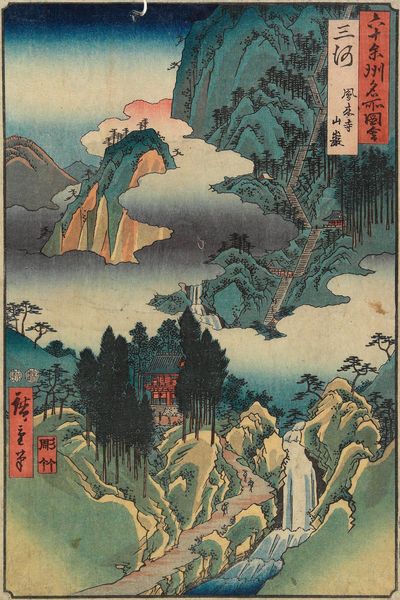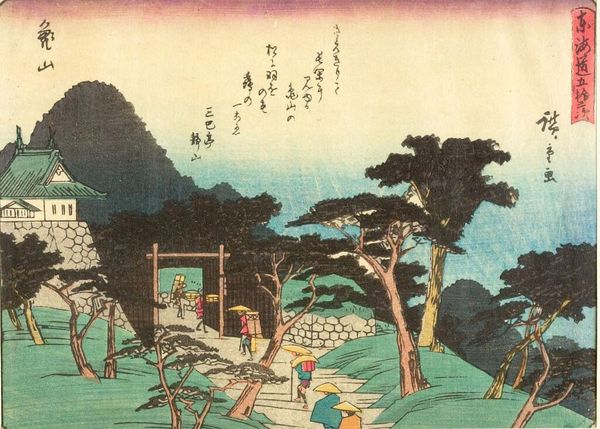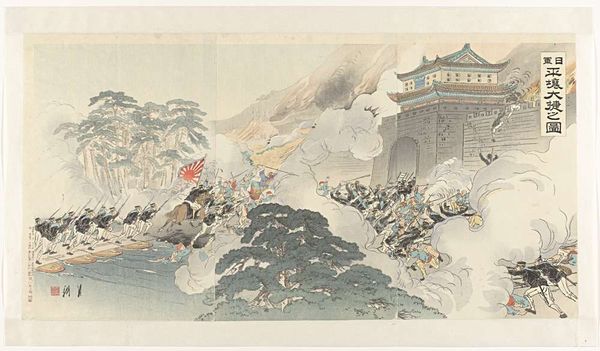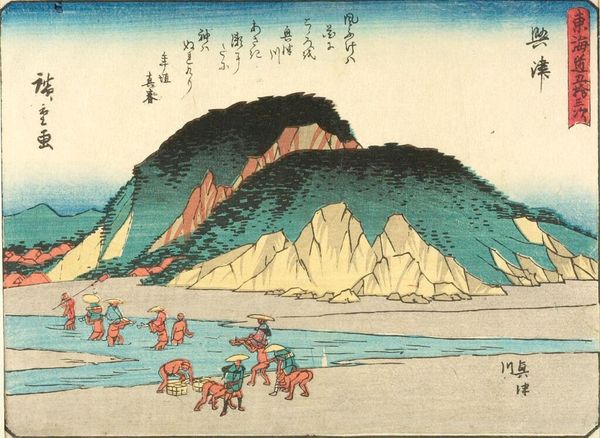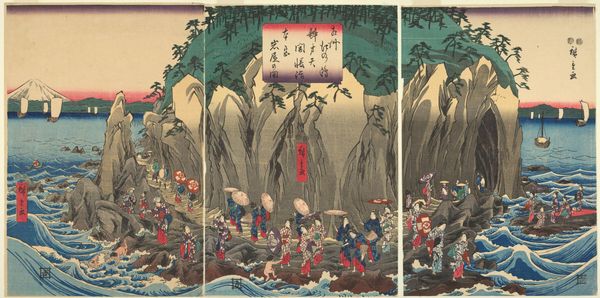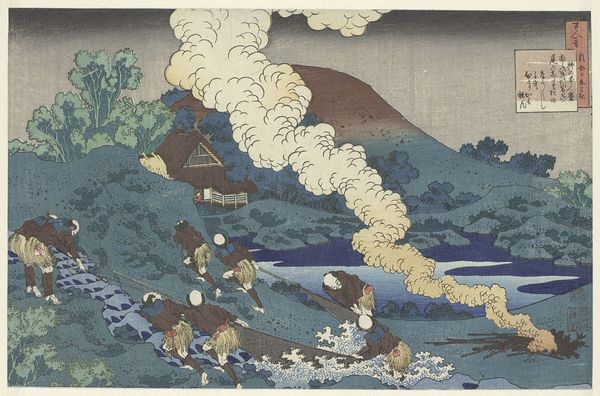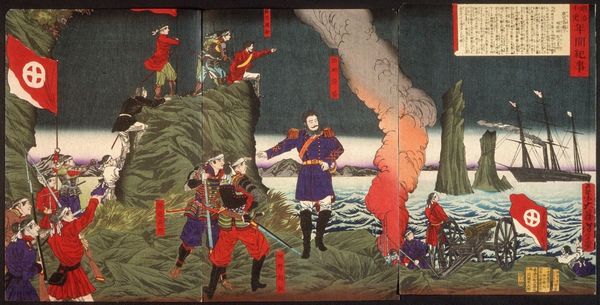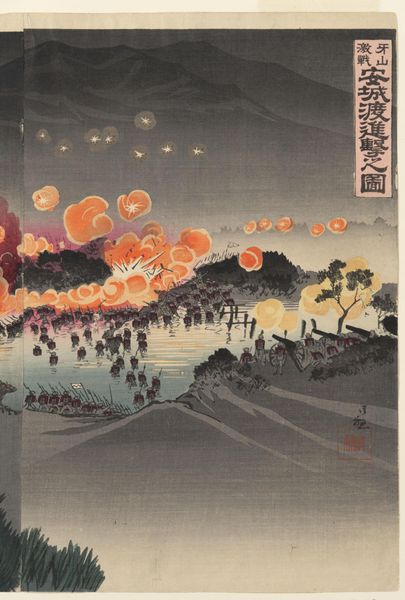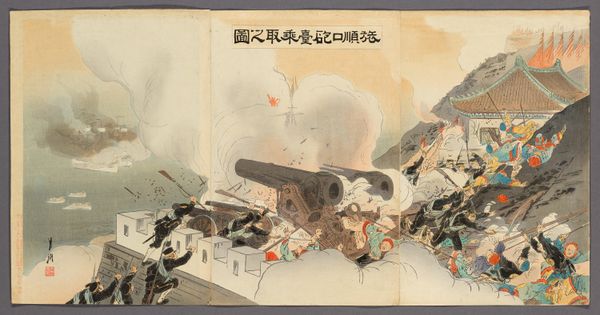
Copyright: Public Domain: Artvee
Curator: This print, created in 1895 by Kobayashi Kiyochika, is entitled "Native Bandits Being Swept up in the Vicinity of Xinzhu in Taiwan." It appears to be rendered in watercolors, reflecting a style akin to traditional ukiyo-e with landscape elements. Editor: My immediate response is one of stark contrast. The tranquil blues and pinks of the sky clash horribly with the scene of utter destruction in the distance, almost a cognitive dissonance in the artwork. Curator: Indeed, that disjunction is striking. The artist captures the historical moment of conflict during the Japanese invasion of Taiwan. I think the plumes of smoke and fire might represent destruction, yet the composition almost aestheticizes the violence, doesn't it? There is a strange beauty at play. Editor: Precisely. Consider the narrative being presented here: Japanese soldiers, clean and orderly, ascending this rocky precipice while met by billowing smoke as an entire town is engulfed in flames. What does this "sweeping up" of so-called bandits represent in the grander scheme of colonial violence and narratives? Curator: It makes me think of propaganda, framing it through a distinct cultural lens. Bandits, here, aren't necessarily "evil" but a symbolic resistance. The cultural weight embedded within such imagery hints at deep-seated anxieties surrounding cultural identity and sovereignty. It's about more than just history; it's about cultural memory and continuity too. Editor: Agreed. Note the clean lines of the invading forces juxtaposed with the hazily drawn, chaotic landscape in the backdrop. This creates a dichotomy reinforcing the idea of civilized control over untamed barbarity, so commonly found in colonial visual rhetoric. But, the title also serves as a tool to dehumanize an entire population, dismissing their struggle as mere banditry. Curator: It serves as a strong reminder of art’s ability to embody historical context, yet its symbols persist in evolving social discourses. This picture isn't just a record of events, it's an ongoing signifier in how cultural memory and conflict interweave. Editor: Absolutely, viewing it through contemporary lenses highlights the complex power dynamics at play. It underscores how images become implicated in the perpetuation—and perhaps the disruption—of colonial ideologies and violent power structures.
Comments
No comments
Be the first to comment and join the conversation on the ultimate creative platform.


